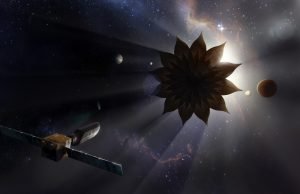A New Way to See Other Earths

 One of the most exciting and ambitious goals of astronomy is to find planets like our own around other stars. These so-called Earth-like planets could be the best candidates for hosting life beyond our solar system. But finding them is not easy.
One of the most exciting and ambitious goals of astronomy is to find planets like our own around other stars. These so-called Earth-like planets could be the best candidates for hosting life beyond our solar system. But finding them is not easy.
They are small, faint, and often hidden by the glare of their host stars. To detect them, astronomers need to use special techniques and instruments that can block out the starlight and reveal the faint glow of the planet.
One of these techniques is called direct imaging, which means taking a picture of the planet directly, without relying on indirect methods such as measuring the star’s wobble or dimming.
Direct imaging has many advantages, such as being able to measure the planet’s size, shape, color, and even atmospheric composition. But it also has many challenges, such as requiring very high contrast, resolution, and stability.
To overcome these challenges, astronomers have proposed an ambitious new technology that could revolutionize direct imaging: starshades.
A starshade is a large, specially shaped screen that flies in formation with a space telescope and blocks out the light from the star, creating a shadow that allows the telescope to see the planet.
A starshade could potentially achieve much higher contrast and resolution than any other existing or planned instrument, and enable direct imaging of Earth-like planets around nearby stars.

However, building and operating a starshade is not a simple task. It requires precise engineering, coordination, and control. The starshade would have to be very large, about 30 meters in diameter, and fly at a distance of tens of thousands of kilometers from the telescope.
It would also have to align perfectly with the star and the telescope, and maintain that alignment as they all orbit around the sun. Any small error or disturbance could ruin the observation.
To test the feasibility and performance of a starshade, NASA has funded several studies and experiments in recent years. One of them is called S5 (Starshade with a Small Space Telescope), which aims to demonstrate a scaled-down version of a starshade mission in low Earth orbit.
S5 would consist of a small telescope with a diameter of 0.5 meters and a starshade with a diameter of 3.5 meters, flying at a distance of about 25 kilometers. S5 would target bright stars with known planets and try to image them with the starshade.
S5 is still in the early stages of development, but it could pave the way for future starshade missions that could image Earth-like planets around nearby stars.
Such missions could answer some of the most fundamental questions in astronomy and astrobiology: How common are Earth-like planets? What are their properties and diversity? Do they have signs of life? And ultimately, are we alone in the universe?



